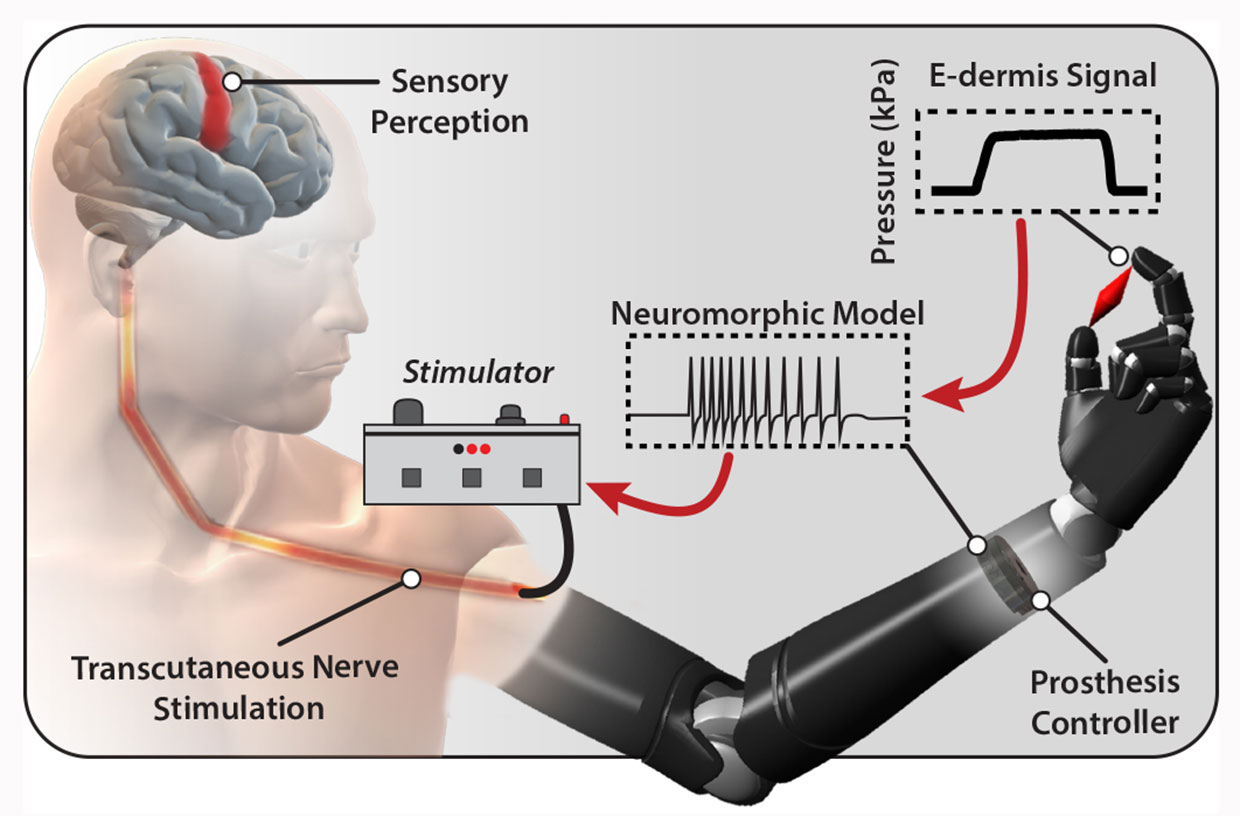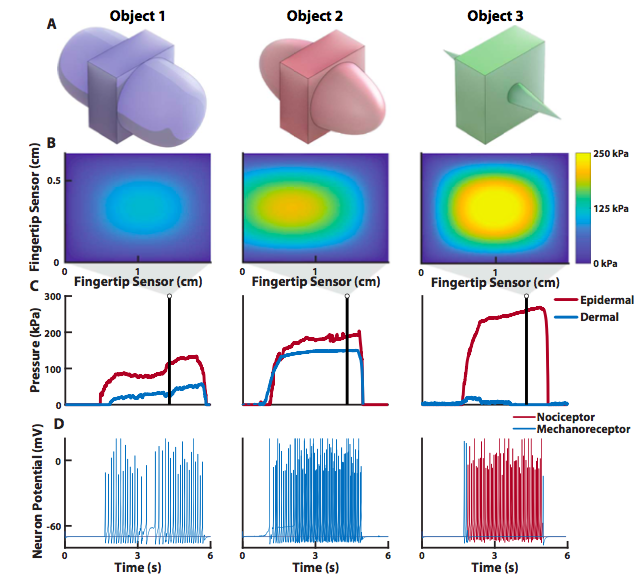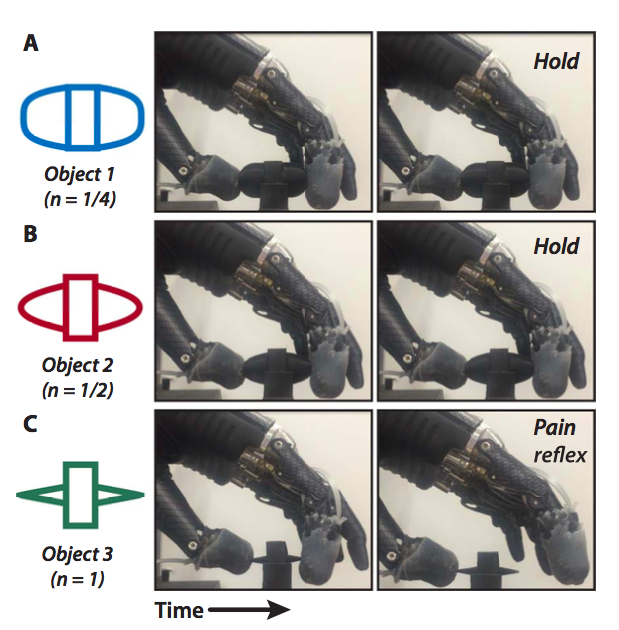Johns Hopkins University created artificial skin that feels pain

Specialists at the American University of John Hopkins have developed a specialized coating for bionic prostheses. This coating is called "electric skin" (e-dermis). It as the real skin actively reacts to external factors. When exerting physical pressure on the skin, the skin sends a signal of pain sensations initially to the ulnar and median nerve, and then to the somatosensory cortex of the brain.
As you can already understand, the prosthesis itself is connected to the rest of the limb, in particular, to the nervous system. Due to this, the prosthesis is capable of forming pain that a person reacts to. It is clear that all this was conceived not in order to make a person feel pain, but in order that the prosthesis carrier could react to situations that are potentially dangerous for an artificial limb. The research results are published in Science Robotics.
In a normal situation, the so-called nociceptors are responsible for generating and transmitting a signal, which, ultimately, makes a person feel pain. They are sometimes called “pain receptors”. They are located in the outer layer of the skin. When an external factor (chemical, thermal or mechanical) appears, the recipe is activated, generates a signal that is transmitted to the spinal cord, and then to the head. The signal travel is long enough; it passes through three types of nerve fibers at once: Aβ-, Aδ-, and C. The first type of receptor is responsible for ensuring that a person responds as quickly as possible to the danger. A pain signal almost instantly manifests itself, which triggers a reflex reaction and a person, for example, withdraws his hand from a hot pan.
Interestingly, the receptors are able to distinguish the “danger” signal from the usual warning. If this were not, then the human body would react in exactly the same way to a knife cut or the pressure exerted by the edge of a wooden ruler. But in the first case, we react sharply, in the second - in general, we can ignore the external stimulus.
In general, pain is good for humans and animals, because it makes it clear that something is going wrong and avoids danger, or at least try to do it. Understanding this, scientists and developers of bionic prostheses have long been looking for a way to learn how to form a sense of touch and pain in different parts of artificial limbs. This, in particular, allows to avoid the destruction of the prosthesis in the event of an excessive load on it.
It seems that the specialists from the Johns Hopkins University School of Medicine have advanced the furthest in this direction . The team leader is Luke Osborne. As a volunteer for the "pain test" was a 29-year-old man who had both hands amputated. Scientists used remnants of nerve endings for skin electromyostimulation of the ulnar and median nerves. The experiment was a success, since the specialists managed to form certain painful sensations in the body of a volunteer.
He himself talks about this as tingling in places where there used to be fingers (I remind you that both hands are amputated). The intensity of the sensation, as it turned out, depended on such pulse characteristics as length and frequency. The most effective and painful was the signal with a frequency of 10 to 20 hertz. In order to verify the results of the study, scientists were not only guided by the words of the man, but also checked the reaction of his body with the help of an electro-encephalograph.

As for the coating, it is not uniform, but consists of several layers of fabric, rubber, a conductive layer and a layer that reacts to a change in pressure. This coating was applied not on the entire prosthesis, but only on the “fingers”, index and big. As it turned out, at a pressure of a certain strength, the signal reaches a threshold that the human body already perceives (approximately 250 kilopascals).
Sharp objects exerted maximum pressure per unit area. With a strong compression of such an object, the volunteer felt pain, and the “brush,” that is, the prosthesis, automatically unclenched. In case the “brush” squeezed objects with rounded edges, the volunteer did not feel pain.

So far, artificial leather responds only to the mechanical factor, but in the near future, experts hope to create more advanced systems that can sense chemical and thermal effects. As far as can be judged, the future is near.
